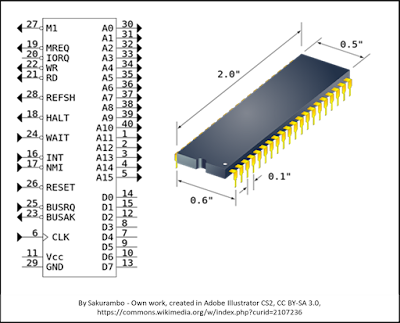Most, if
not all, of us have experienced hearing that piercing whistle from sound
systems. What causes it, and what can we do to minimize or eliminate it?
There are
several types of feedback, but in this case, the proper name is acoustic
feedback, the type of feedback that you can hear. In simple terms, feedback
happens when the sound from the speakers enters the microphone/s, goes through
the mixers and amplifiers, out through the speakers, and back into the
microphone/s. In the case of guitars, the sound from the speakers makes the guitar strings vibrate, which goes through the sound system, out the speakers, and vibrates the strings again. So, essentially, the sound is going 'round and 'round the sound system.
Feedback may be caused by microphones, guitar pickups, and other sound system inputs, along with speakers. They can range in frequencies from a low rumble to an ear-splitting shriek.
So, how can
you prevent your sound system from going into feedback?
Factors
that can trigger feedback and solutions you can apply:
1 – System volume.
The louder the sound, the more likely the sound will reach the microphone.
Solution:
Reduce the volume and/or speak closer to the microphone so you can lower the
volume. You can also use noise-cancelling microphones.
2 – Speaker
to mic proximity. The closer the microphone is to the speaker, the more likely
that feedback will occur.
Solution:
Get the speakers as far away from the microphones as practically possible.
3 – The microphone is pointing at the speaker (the sound has a direct path toward the
microphone).
Solution:
Orient the speakers so they are pointing away from the microphones. It's easier
to do by using unidirectional (a.k.a. cardioid) microphones.
4 – Room has
a lot of reflective surfaces (even if the microphone is not pointing at the
speaker, sound from the speaker can reach the microphone from reflections from
the walls, floors, and ceilings).
Solution: Cover
the walls, ceilings, and floors with sound-absorbing materials. You can also
install slats on the walls to break up reflections. Upholstered chairs will
also help. If the chair is unoccupied, the upholstery will absorb sound. If the chair is occupied, the person sitting on it will absorb sound.
5 – Room has
parallel walls and parallel floor, and ceiling. Sounds that bounce back and
forth between parallel walls create "standing waves" that take longer
to die down.
Solution:
Same solution as #4. You can also build the room so that it doesn't have
parallel walls, ceilings, and floors.
Other solutions:
1 - Install
"phase delay" equipment. These devices will shift the phase of the
incoming sounds so that they will not generate "constructive interference"
or sound that adds on to itself.
2 - Use a
"cut-only" equalizer and a spectrum analyzer to reduce the frequencies
where the feedback occurs. These are equalizers that don't have plus adjustments, only minus adjustments (the 0 dB is at the top of the sliders) and have
bandwidths of 1/3-octave. When you increase the system volume and feedback
starts to occur, you check the analyzer to find the frequency of the feedback
and reduce the level of that frequency. Keep increasing the level and cutting
the frequencies of the feedback until you attain your target system volume.
You can also use equalizers with cut and boost controls. The difference is, cut-only equalizers usually have a larger cut range than cut and boost types.
Urei brand room equalizer
Note: these days, you can download a spectrum analyzer app to your phone. It should be accurate enough for general sound system adjustment.










